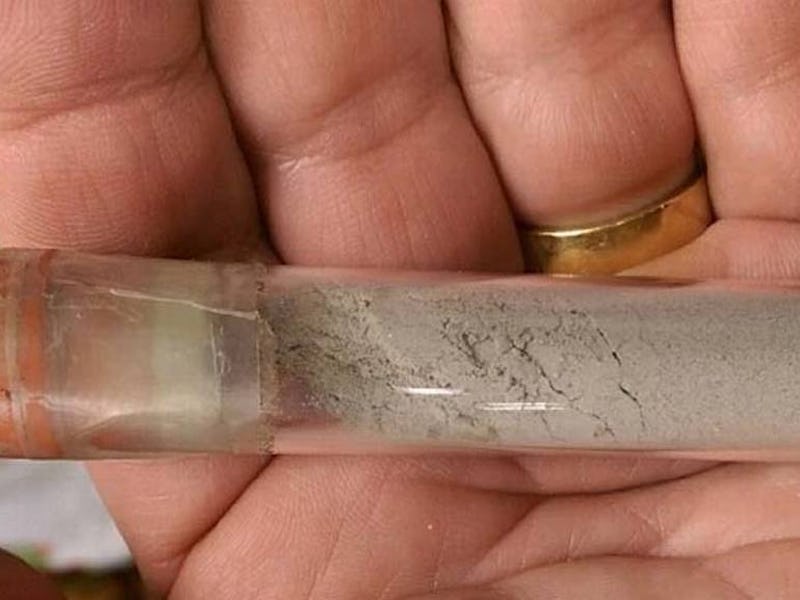When Laura Murray Cicco was ten years old, she received a gift that was literally out of this world. At least it used to be. Her vial of alleged moon dust had passed from the hands of none other than astronaut Neil Armstrong to her father, her mother, and finally into her own. Now, nearly 50 years later, Cicco is in the process of suing NASA to preemptively secure the rights to the dust just in case the agency comes after it.
The Associated Press reported Saturday that Cicco filed the lawsuit to the US District Court of Kansas on Wednesday, declaring that the moon dust belongs to her under the US Declaratory Judgement Act. However, NASA has historically asserted that anything taken during a lunar mission belongs to the agency. In an email to Inverse, Allard Beutel of NASA’s Office of Communications said: “With the case in court, it would be inappropriate for NASA to discuss details related to the claims.”
In the 2007 Lunar Sample Allocation Guidebook, NASA asserts:
“NASA policies define lunar samples as a limited national resource, and future heritage, and requires that samples be released only for approved applications in research, education, and public display… Lunar samples are the property of the United States Government, and it is NASA’s policy that lunar sample materials will be used only for authorized purposes.”
The alleged note that was given with the moon dust.
While the 1967 Outer Space Treaty declares that major spacefaring nations can’t claim celestial bodies as national territory, claiming that lunar samples taken by NASA belong to NASA is within the confines of that treaty. Frans von der Dunk, J.D., a professor of space law at the Nebraska College of Law, tells Inverse that taking small qualities of material for scientific purposes is “widely acknowledged as legitimate.”
“That is why NASA, ‘on behalf of the United States,’ can claim ownership over the moon rocks and other small quantities of materials brought back by the various Apollo astronauts,” von der Dunk explains. NASA has only honored the “obligation to use such materials primarily for scientific purposes, but also has done so in the spirit of international cooperation, equally honoring the ‘global commons’-like status of outer space and celestial bodies.”
As far as “lunar material” goes, the US has collected 842 pounds of rocks, core samples, pebbles, sand, and dust via six Apollo missions from 1969 to 1972. The first of these missions was the famous 1969 Apollo 11 mission, in which Armstrong became the first human to set foot on another celestial body. The six space flights resulted in 2,200 samples from different moon sites, and today nearly 400 samples are distributed around the world for research and teaching projects.
However, the samples are not supposed to be in private possession — unless they are one of the “goodwill gifts” the US government has presented to various nations and states as a diplomatic gesture. Not even astronauts are allowed to keep the rocks.
This brings us back to Cicco, who, according to her lawyer Chris McHugh, was “rightfully given this stuff by Neil Armstrong, so it’s hers and we just want to establish that legally.” In 2017, McHugh won a different case against NASA: The agency attempted to seize a bag used by Armstrong to collect samples during the Apollo 11 mission that became the possession of private citizen Nancy Carlson after it was taken by the US Marshals Service when they seized the property of a space museum president. No one realized the bag was special, so Carlson bought it. In that case, the US District Court of Kansas sided with Carlson, and she was able to sell it for $1.8 million.
Whether Cicco will be granted possession of her moon dust, however, remains to be determined. Von der Dunk explains that, at this point, her case is one for US law experts, not space lawyers. Did NASA actually give Armstrong this bit of moon dust and allow him to give it to others? Was giving the dust even legal? Is it really even moon dust? These questions remain to be answered in what will definitely be an interesting few months for NASA.
